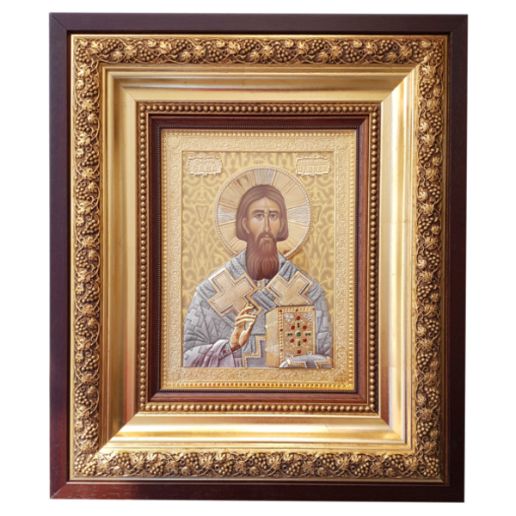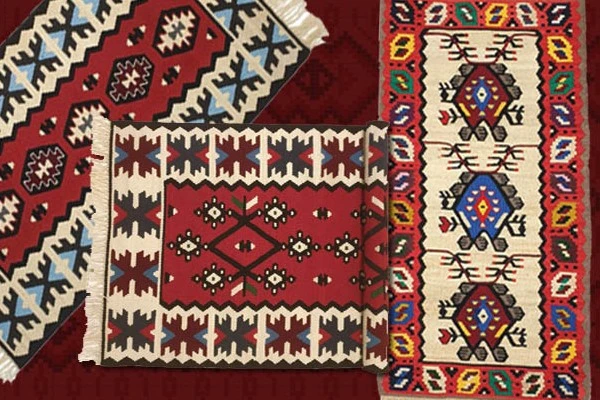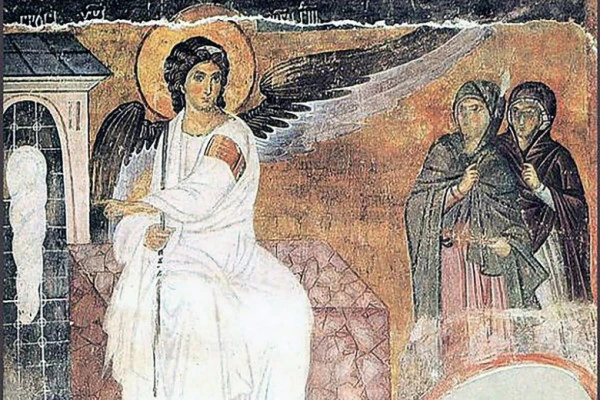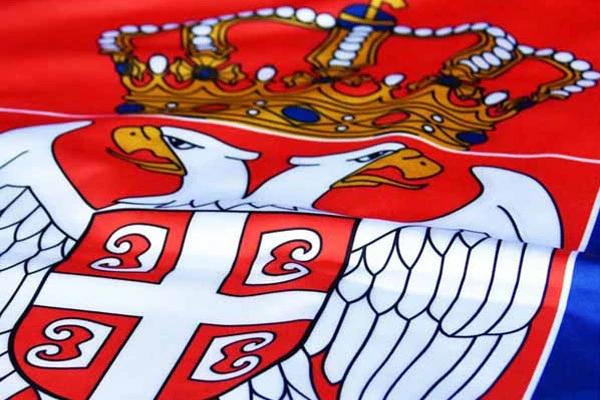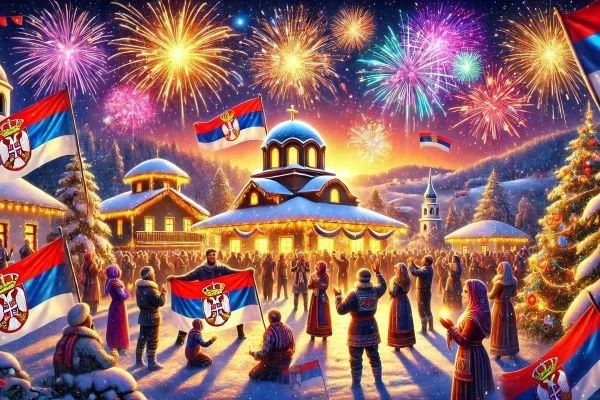SAINT SAVA
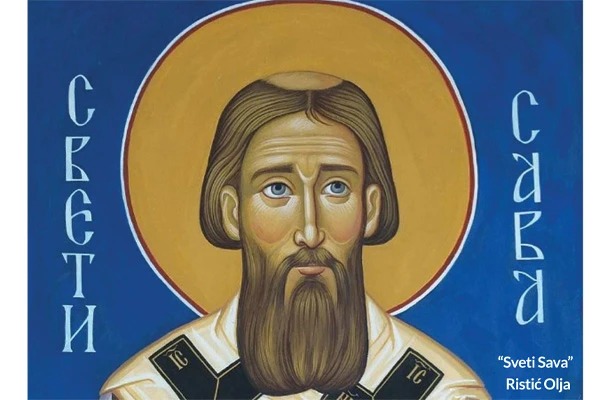
Sava - from myth to historiographical data
Having in mind the fact that eight centuries separate us from the time when Sava lived, it is understandable that historical sources are modest, unreliable and inaccurate. On the other hand, the deep trace that he left and the exceptional place in Serbian history that he occupies, built the myth of Sava, creating from it our prayer.
He was born around 1175 and already in his earliest childhood he showed interest in the faith, the church, and the lives of early Christian saints.
Thus, already at the age of sixteen, he fled to Mount Athos, became a monk and received the monastic name Sava.
What did Sava look like?
Based on the visual representations, modern scientists conclude that Sava was tall, broad, slightly lowered shoulders, elongated face with a high forehead, almost eagle nose, thin lips, longer ears and eyes "that look and radiate light".
In Theodosius, it is written that Sava had "the beauty of his face" and "pure bright golden hair" in his youth. However, due to the strict monastic life, as Theodosius writes, he "became incurably ill".
Sava's hand
What is preserved from the body of the saint is his left hand without a little finger, which was miraculously preserved after the burning of his relics in 1594 in Vracar. It has been kept for a long time in the monastery of the Holy Trinity near Pljevlja, and now it is located in the monastery of Mileseva near Prijepolje. According to some testimonies, the little finger was transferred to Peja in 1680.
The writings reveal that Saint Sava possessed "eloquence and great ease in the development of basic thought", and in the letters and sermons he shows himself to be a sensitive man of tame character. Descriptions of contemporaries and writers close to his time portray him as a man of "extraordinary energy, higher intellectual abilities, persistent will and timid nature."
While Sava left behind his great work and legacy, only the archbishop's scepter remained from the personal belongings of Saint Sava, which is today kept in the treasury of the Mileseva monastery.
Saint Sava - from a religious fanatic to a statesman and an educator
Sava had fled to Mount Athos and became a monk there, with one desire, to be an ascetic, and with one ideal, to live the life of old Christian saints and martyrs. Perhaps already in the Holy Mountain, he felt, out of Christian love, a narrower, but natural, love for the environment, his brothers, for the country, where he was born and for the people, from when he originated.
He wanted to help ordinary people
Sava felt the call and the need for work and action, to leave the cell and the church for the state and the people. Nemanja's blood boiled in him and drove him into battle, and he responded to the voice, which called him from heaven and inside, and obeyed his inner needs and inclinations. In Studenica, Sava became from a hermit a worker in the people and for the people, from a religious fanatic a propagandist of social morality, from a young enthusiast an organizer, statesman and writer.
"Traveling for the love of God", Sava is the first Serbian cosmopolitan, a cosmopolitan who brought the world to Serbia. He met with the Byzantine and Bulgarian emperors, the Hungarian king and the Egyptian sultan… Contemporaries from Constantinople to Jerusalem, from Brindisi to Trnovo, from Rome to Buda knew about him…
Sava traveled a lot among the people, he taught them always and on every occasion in all directions and supervised the work of the priests in the church and in the people. His influence and work at that time was directed in various directions, both outside the church and religious matters. He was a great teacher and educator.
Literary work
Sava's literary work is very extensive, and is intended mainly for the organization of monasteries. He first wrote three types:
- "Karejski tipik",
- "Hilandarski tipik" and
- "Studenički tipik"
At the beginning of "Studenički tipik", he described the life of the founder of that monastery, his father Stefan Nemanja, in a monastery called Simeon. "Life of St. Simeon ", which later separated from" Studenički tipik "and became independent, is the most important work of Sava. Nemanjin's secular life is described in it briefly, and monastic in more detail.
Under the influence of this biography, a completely independent literary genre of hagiographies (biographies) of Serbian rulers and saints developed.
Relics of Saint Sava
The relics of Saint Sava were in Mileseva, until Sinan Pasha took them from there, took them to Belgrade and burned them on the hill Vracar on April 27, 1594. After the liberation from the Turks, a temple dedicated to Saint Sava was built in Vracar, as a sign of remembrance and gratitude. for all that Saint Sava did for his people and church.
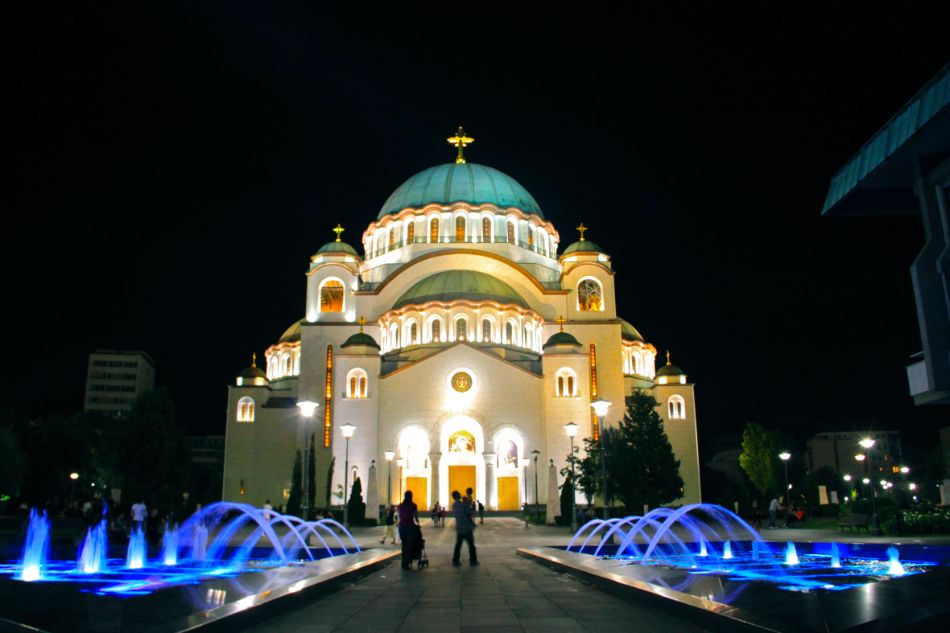
The place of burning, however, was probably not in today's Vracar, which was then far outside the city walls, but on the hill "Cupina umka" in the place between today's church of St. Mark and the sports complex, which was then called Vracar.
The Serbian Orthodox Church celebrates Sava as a saint on January 27 according to the Gregorian calendar, and on January 14 according to the Julian calendar. The holiday of Saint Sava, Savindan, is celebrated as a school holiday in all schools in Serbia and Republika Srpska. The burning of the relics of Saint Sava is also marked.
This is only a part of the debt to Saint Sava. With him, Serbia became the world - the best one. Spiritualized. The world of high culture and artistic achievements.
Related products
Read also
How to wash a pirot carpet - 5 steps to a perfectly clean and fragrant carpet
Traditional Serbian carpets are a valuable family heirloom. They refine and…
White angel - the purest symbol of the Serbian people
Frescoes represent an artistic segment of religion and as such occupy a special…
Serbian flags throughout history - What all Serbian flags looked like and what distinguishes them
A flag is much more than a piece of cloth – it is a symbol of a nation's identity,…
Who was Saint Sava and what was his contribution?
"Saint Sava: A Beloved Serbian Saint with a Rich Legacy and Cultural Significance"
…Serbian New Year: Tradition, Customs and How to Celebrate it
The Serbian New Year, also known as the Orthodox New Year, is celebrated on…
Gifts Inspired by Serbian Culture: Authentic Ideas for the Holidays
The holidays are a time of giving, and finding the perfect gift is often a challenge.…
Traditional Serbian Christmas Customs: How to Cultivate Them in Modern Times?
Christmas is the most joyous holiday in Orthodox Christianity, a time when families…
How to Bring the Spirit of Orthodox Tradition into Your Home This Winter?
Winter is the perfect time to bring warmth, togetherness and the spirit of Orthodox…
Serbian Souvenirs: Perfect New Year's Gifts for All Tastes
New Year is the time of giving, and what is more beautiful than a gift that…
How to stay productive and not waste an entire day on Black Friday shopping
Black Friday is a day full of amazing discounts, but it can easily become exhausting…
Folk Beliefs and Customs for Saint Aranđel - Assembly of Holy Angels
Saint Michael the Archangel, who is celebrated…
Folk Beliefs and Customs for Đurđić - Glory of St. George
Đurđić, the feast of St. George, celebrated on November 16, is one of the most…

Apply for newsletter
Sign up for the Serbianshop newsletter and get a 10% discount.


